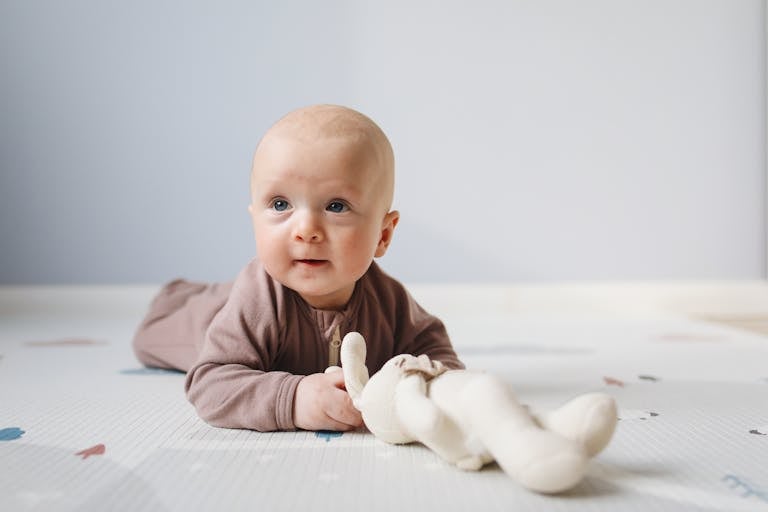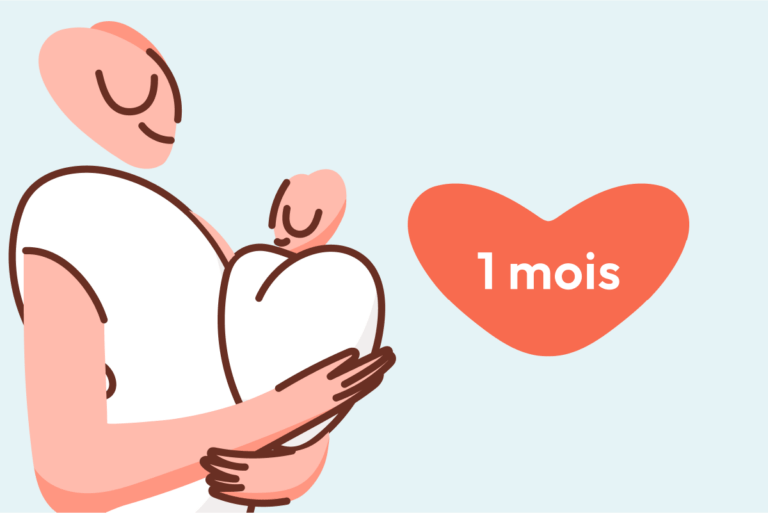All parents know those moments—baby’s nose is stuffy, tiny breaths become ragged, sleep is fractured, feeding turns into a struggle. Anxiety rises: is this just a cold, or will congestion spiral into endless wakeful nights and restless feeding sessions? Welcome to the world of baby nasal suctioning, where your care can mean the difference between distress and relief. Understanding when, why, and how to help a congested baby breathe freely isn’t just a technical act—it’s a practical skill forged from evidence, empathy, and the unique rhythm of each family. From decoding the science of mucus production to weighing your device options, practical guidance and clear medical explanations await. Everyday routines, scientific clarity, parental self-trust—it’s all here, in a language designed for busy minds and tired hearts.
Why Baby Nasal Suctioning Is Essential: Physiology, Comfort, and Oxygen Flow
Why does a baby’s stuffy nose seem to cause such disruption? Tiny nasal passages; dependence on nasal breathing, especially in newborns; immature immunity—combine these, and you have a perfect recipe for congestion setting in with even minor mucus production. What does that mean for oxygen intake? Even a small build-up can reduce airflow, increasing respiratory effort and quickening exhaustion.
Newborn babies, lacking the know-how to expel secretions by themselves, rely entirely on parents. When mucus accumulates, not only is feeding hampered—imagine trying to nurse or bottle-feed while struggling to breathe through your mouth—but sleep is interrupted, fussiness escalates, and the risk of complications creeps higher. Want to minimize these risks? Baby nasal suctioning empowers you to restore clear airflow quickly, improving comfort, supporting rapid recovery from illnesses like the common cold or RSV, and preventing mucus stagnation that can, left unchecked, escalate into ear or lower respiratory tract infections.
Signals worth your attention? Watch for more than just noisy breathing: subtle sucking difficulties, frequent night-waking, or visible nasal secretions point towards the need for intervention. Still, moderation is key—a maximum of four times per day prevents nasal lining damage, while two uses with just saline irrigation may be sufficient for milder cases.
Medical Insights: Causes of Baby Nasal Congestion
What brings on that infamous stuffy nose in infants? The most frequent triggers are viral—rhinovirus, respiratory syncytial virus, influenza, or bronchiolitis, with environmental irritants such as dust and smoke playing a supporting role. Allergies rarely manifest in very young babies but can’t be excluded as children grow. When exposed to these agents, the delicate nasal mucosa ramps up mucus production—a normal defense mechanism, yet one that quickly overwhelms the narrow nasal cavity and nasal mucosa in infants.
Each episode of congestion carries its risks: inefficient mucus clearance can impair hearing (mucus obstructs the Eustachian tube) and cause discomfort, or in more severe cases, reduce oxygen saturation—an issue that warrants prompt medical attention.
Tools of the Trade: Choosing and Maintaining Baby Nasal Suctioning Devices
Here the options multiply, each with its own strengths and technical specifics. Understanding the nuances allows you to align your routine with what’s most effective and least distressing.
Saline Solutions: Foundation of Safe Cleaning
Scientific studies confirm that isotonic saline solution (same salt concentration as body fluids) is both gentle and capable of loosening even stubborn secretions. Saline drops or sprays (often sterile saline ampoules) hydrate the nasal mucosa, breaking up mucus before any form of suctioning. For babies under six months, a simple pod with a few drops is most appropriate; for those older, a fine mist of sea water spray becomes possible.
Bulb Syringes: Simple, Classic, Cautious
That soft, squeezable bulb syringe—long a staple in nurseries everywhere—offers predictable but occasionally limited suction power. The process: compress the bulb, gently introduce just the tip at the entrance of the nostril (never deep inside), and release to draw out nasal secretions. The major benefits? Affordability and reliability. The principal drawbacks? Limited power, risk of overuse or improper cleaning, and possible irritation with incorrect technique.
Oral (Mouth-to-Nose) Aspirators: Adjustable, Hygienic, Parent-Controlled
Devices like the “NoseFrida” intrigue with their adaptability. Using your own gentle suction, separated from the mucus by single-use filters, you adjust intensity while minimizing baby distress. The mouthpiece, connected by tubing to a soft nasal tip, never enters the nostril but creates enough negative pressure to remove both thin and thicker secretions. Hygiene is paramount—filters must be changed after every session, and thorough washing is required to prevent contamination.
Electric Nasal Aspirators: Modern Precision
Electric models, found in many pediatric toolkits, deliver consistent suction and offer silicone tips shaped to baby nostrils for maximum comfort. Features like adjustable power levels or even soothing sounds are standard. While effective for thicker, adhesive mucus, these devices demand precise cleaning and strict adherence to manufacturer instructions, particularly regarding battery maintenance and sanitization routines.
Hospital-Grade Suction Catheters: For Severe Cases Only
Reserved almost entirely for healthcare professionals, the suction catheter enables deep and controlled mucus extraction in cases of severe or potentially life-threatening congestion (often under direct visualization or with monitoring of oxygen levels). This technique is not for home use—consultation with a healthcare provider is essential before any intervention at this level.
Step-by-Step Technique: Comfort, Safety, and Efficiency in Baby Nasal Suctioning
Preparation is everything—both for your baby and your own peace of mind. Wash your hands well. Line up sterile saline, soft tissues, and your chosen device. Make the environment calm: soft lighting, gentle words, perhaps a comforting toy.
For the bulb syringe: compress, insert tip just at nostril entrance, release slowly. For oral aspirators: position the tip at nostril, apply measured suction via mouthpiece. With electric aspirators: use the lowest setting first, briefly touch the tip to the nostril entrance, then suction gently. Never force or insert devices deeply; this risks nasal trauma.
Saline plays a dual role: both as a mucus-loosener and a protector of the delicate epithelial lining. For mild congestion, saline alone might suffice—skip suction unless secretions remain problematic.
Holding your baby securely (back-lying position, head slightly to one side during saline application) creates stability and minimizes movement. Swaddling can help for restless babies. If the procedure becomes distressing, pause and try again later—minimizing trauma is just as important as clearing mucus.
Afterwards, comfort is immediate for most infants—breathing eases, color improves, and sometimes hunger returns. Discard single-use filters if used, and clean every device component with warm, soapy water before air-drying and storing safely.
Science Behind Efficacy: Medical and Physiological Benefits
What difference does effective baby nasal suctioning make? Studies demonstrate faster recovery from upper respiratory tract infections, improved sleep quality, and more efficient feeding. By avoiding prolonged mucus stagnation, you reduce the risk of acute otitis media (middle ear infection) and lower respiratory involvement (such as bronchiolitis progression). Babies with clear airways expend less effort breathing—preserving energy for growth, play, and learning.
From a family perspective, every easy breath means heightened comfort, quieter nights, and reduced stress. Parental anxiety, so often linked to helplessness during baby’s illnesses, gives way to empowered, responsive routines.
Additional Relief: Complementary Approaches to Nasal Care
Would suctioning alone solve everything? Not always. Consider these medical and environmental measures:
- Cool-mist humidifiers—by increasing ambient humidity, the nasal passages remain moist, decreasing viscosity of mucus and soothing irritation.
- Hydration—breastmilk or formula thin secretions, making natural movement through the nasal cavity easier.
- Slight elevation of the crib mattress (placing a rolled towel under one end) can reduce nighttime congestion (strictly avoiding the introduction of objects or loose bedding into the crib for safety).
- As your child grows, modeling gentle nose-blowing becomes a path toward autonomy, reducing dependence on medical interventions.
For mild congestion, saline alone sometimes does the trick—skip the device, and let time and hydration do their work.
Parental Guidance: Empowerment, Science, and Support
The reactions you spot—brief crying, flailing, or agitation—are typical in response to the unexpected sensation of suctioning. Rest assured, discomfort is transient, and improved breathing follows almost immediately for most babies.
Errors can happen—using a vasoconstrictor-containing solution without a doctor’s approval, aggressive or frequent suctioning, or insufficient cleaning are to be avoided. Saline and gentle, age-appropriate methods should remain your anchors.
When to escalate? If you notice persistent breathing effort, color changes (bluish lips or face), prolonged lethargy, or nasal skin breakdown (bleeding, ulceration), step back from home treatments. Trust your instincts, and consult a pediatrician without delay; healthcare professionals are there to support—not judge—your decisions.
Key Takeaways
- Baby nasal suctioning offers immediate comfort, boosts feeding efficiency, and supports unbroken sleep—protecting both baby and family well-being.
- Choose devices adapted to your child’s anatomy, age, and circumstances; use sterile saline beforehand to soften secretions.
- Limit nasal care to key moments—mealtimes and bedtime—and no more than four times daily to prevent damage.
- Attentive hygiene, calm routines, and knowledge of warning signs reinforce safety and ease.
- For specific guidance or reassurance, reach out to healthcare professionals, and check trusted resources like the Heloa app for tailored advice and free pediatric health questionnaires. Every step you take builds resilience, trust, and a little more peace at home—breath by breath, day or night.
Questions Parents Ask
What should I do if my baby hates nasal suctioning or becomes very upset?
It’s absolutely normal for babies to find nasal suctioning uncomfortable and to protest during the process. Try to create a soothing environment—soft voice, gentle touch, and calming background sounds can help. If your child becomes very distressed, pause and offer reassurance. You might try again in a few minutes or involve another caregiver to help comfort your baby. Remember, frequent or forceful suctioning isn’t necessary; gentle, occasional care is often enough. Rest assured, this challenging moment passes quickly, and your presence is already a great source of comfort for your little one.
Is it safe to use nasal suction multiple times a day?
Nasal suctioning can provide relief for a congested baby, but moderation is key. Using a nasal aspirator or bulb syringe too often may irritate the nasal lining. In general, limiting suctioning to a few times per day is a good practice. If you notice your baby’s nose remains congested or discomfort persists despite gentle suction, it’s a good idea to check with your healthcare provider for guidance. Your baby’s well-being and comfort are always a priority—trust your instincts.
Can I suction both the nose and mouth if my baby is congested?
For newborns, especially just after birth, it’s often helpful to clear the mouth before the nose to avoid accidental inhalation of mucus. If your baby has congestion in both places, start with the mouth using gentle suction, then proceed to the nose. Go slowly and use clean, infant-specific equipment each time. If you’re ever unsure about the best approach, don’t hesitate to seek advice from a healthcare professional—there’s no such thing as a silly question when it’s about your baby’s comfort.










